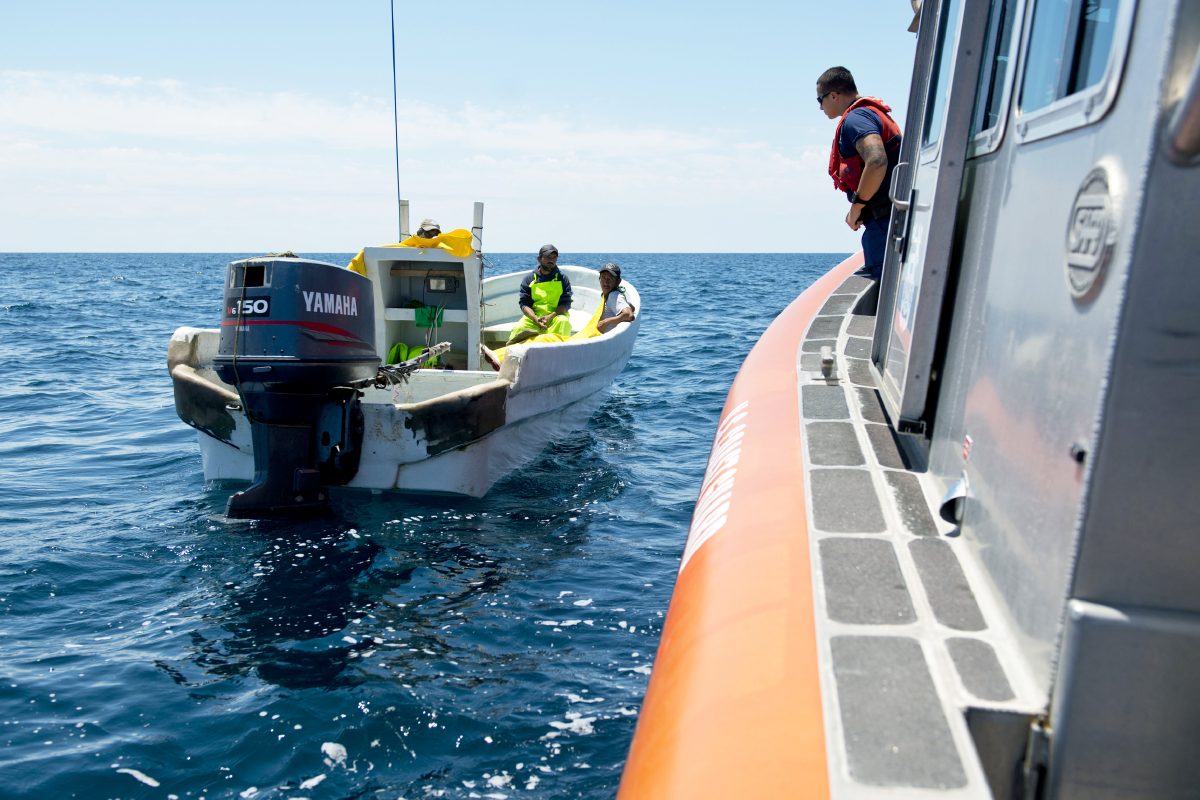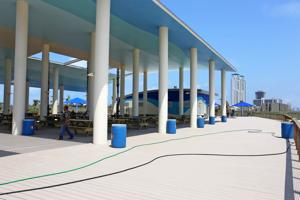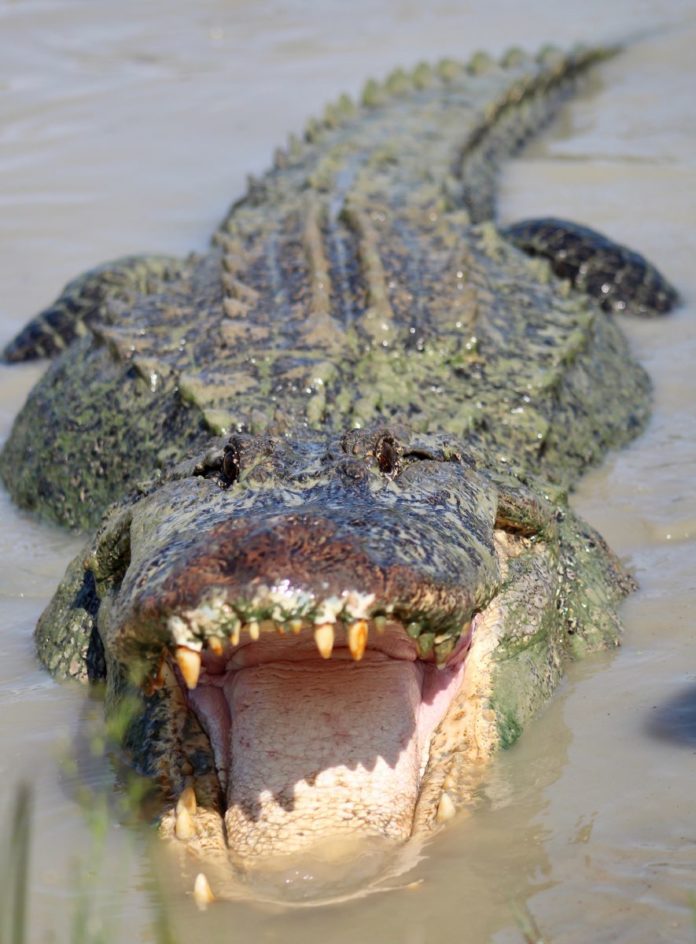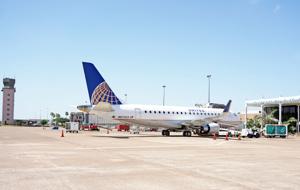In the sun-blasted, wind-riven waters between the South Padre Island jetties and the mouth of the Rio Grande, a different kind of border crossing crisis is playing out.
One side has spotter aircraft, radar and fully crewed patrol craft loaded with the latest technology. The other employs simple 20- to 30-foot boats with outboard motors, capitalizing on speed and a canny sense for beating a tactical retreat.
For Mexican lancha crews fishing illegally in the waters of the United States, low-tech often proves good enough.
In the past five years, U.S. Coast Guard interceptions (visual sighting at sea or by air) and interdictions (stop and seizure) are up. Last year, Coast Guard crews seized 60 vessels which were fishing illegally in U.S. waters.
This year, they’ve already boarded and taken 58.
Move in, retreat
The border between the United States and Mexico doesn’t stop at land’s end. It stretches straight east from where the Rio Grande pours its muddy stream into the Gulf of Mexico for 200 miles to delineate what’s called the Exclusive Economic Zone. North is claimed by the United States and south by Mexico.
Problem is, in Mexico waters, poorly regulated commercial fisheries are playing out.
But there are plenty of fish in the sea just across the border to the north. And that’s where the U.S. Coast Guard and Texas Game Wardens are making their stand.
“From the South Padre Island jetties, it’s about six miles to the river,” said Asst. Sgt. Jason Duke of the Texas Game Wardens. “In our larger boats and everything else, they can see us coming from a long ways out, without radar or anything like that. They just crank their motor and get right back across the border before we can get there.”
In Texas waters, which extend nine miles from shore, the two- to four-man lancha crews fishing illegally primarily target shark, using illegal long lines. But beyond state waters in the federal zone, lancha fishermen are more likely to target prized red snapper, illegally taking up to 780,000 pounds each year, according to a U.S. Coast Guard economic impact study released in 2015.
Long-liners, gill nets
In U.S. waters off Cameron County and in the Rio Grande itself, Texas Game Wardens have seized 84,680 feet of illegal long lines, 15,098 feet of illegal gill nets — both methods are indiscriminate killers —10 crab traps and 224 feet of trotlines.
And that’s just in the past six months.
“Most of the time we’re able to, if they’re setting their long-line gear, we’re able to at least retrieve the gear that was set illegally in our waters and file for destruction orders from a judge and destroy it,” Duke said. “Very rarely do we catch them, because it’s just geography — they’re close to the border and get there before we do, and that’s the end of the game.”
The fishing boats which lose the hide-and-seek game with state and federal enforcement agents are eventually destroyed.
Work boats
Lanchas are quick and seaworthy boats from 20 to 30 feet long, powered by outboard motors from 75 horsepower up to 200 horsepower.
They’re perfect working boats for the gulf and for taking advantage of the fact U.S. law enforcement isn’t allowed to pursue them back into Mexican waters if they’re suspected of fishing illegally.
“Run-of-the-mill commercial fishing boards are a ponga-style boat, some people call it that,” Duke said. “It’s a very standard fishing boat for Mexico and they will put slightly larger engines on them from time to time.”
The lanchas dart into U.S. waters, drop their banned long lines or gill nets, and quickly speed back into the safe embrace of Mexican waters. After five or six hours — enough time for a boatload of sharks, say, to hook themselves — they race back to haul in their catch and again retreat to Mexico.
“The boat design is actually very efficient for cutting through the sea state,” Duke added. “They’re all-weather boats and do a really good job for them and it makes it difficult on us.”
The risks
Danger to game wardens or Coast Guard crews in this cat-and-mouse game on the high seas is always a concern.
Some lanchas aren’t what they appear.
“There is a spillover in the lancha business between the illegal fishery and narcotics smuggling,” Duke said. “So there’s always a risk you’re trying to contact a boat you think is illegally fishing, and he’s actually carrying narcotics.”
Narcotics smugglers can face decades in prison if caught, and can turn to violence in trying to escape, given the stakes. But lancha fishermen pose little threat to U.S. law enforcement officers.
In fact, many individuals may even be familiar, some having been apprehended more than a dozen times. Although their boats are seized, the crew members are returned to Mexico.
“For the most part, the fishermen, they’re never violent, they never pose much of a threat to us or cause us any kind of harm,” Duke said. “But this business is dangerous for us in the sense that we’re out there in the elements and dealing with all of it.
“If we get into a boat chase there’s always the risk of the sea state and everything, incurring an injury or something happening,” he added. “Also, when we’re retrieving their illegal gear, you’re pulling thousand-pound test monofilament and you’re pulling it over the deck, and if you get a really large shark on there, there’s always the risk of hooks in your hand or pulling you overboard.”
Red snapper
Red snapper, highly desirable as table fare, are a difficult fish to attempt to regulate. Inside of nine miles, that is left to Texas fisheries authorities and state law enforcement. But beyond nine miles out to 200 nautical miles, that area known as the Exclusive Economic Zone, federal authorities oversee the fishery.
The species is a lucrative target for illegal fishing by Mexican lancha crews.
The Coast Guard estimates each foray by lanchas into U.S. waters yields on average 800 to 1,200 pounds of red snapper a day for the illegal boats. For larger lanchas, it can be as much as 3,000 pounds of red snapper daily.
So where do these illegally caught red snapper end up?
Probably on your plate.
“Red snapper’s expensive,” Duke said. “You can go to a fish market and look. Most of the stuff they’re poaching out of our waters is coming right back across the border as imports and going to our restaurants and being sold or whatever, so it is a very lucrative business for them.”
Government’s stance
U.S. government agencies, including the National Oceanic and Atmospheric Administration, have long sought to crack down on illegal fishing by Mexican lanchas.
“NOAA has worked closely with the U.S. Coast Guard and State Department for decades to address concerns related to illegal fishing by Mexican lancha vessels,” John Ewald, director of public affairs for NOAA fisheries, said via email. “Under the direction of the Secretary of Commerce, we identify nations whose fishing vessels engage in illegal, unreported, and unregulated (IUU) fishing, and consult with those nations on improving their fisheries management and enforcement practices.”
In 2015, Mexico was identified as having vessels fishing illegally in the U.S. Exclusive Economic Zone as well as overfishing of stocks where regulatory authority is shared with the United States. Red snapper was one of the species cited.
“In our 2017 Biennial Report to Congress, Mexico was negatively certified for not taking appropriate corrective action,” Ewald added. “This triggered port denials of Mexican flagged fishing vessels from U.S. ports in the Gulf of Mexico.”
Ewald said the federal government continues to work with Mexican officials in the administration of new President Andres Manuel Lopez Obrador in an attempt to address the longstanding concerns about illegal fishing in U.S. waters. He said the results of this effort will be detailed in NOAA’s upcoming 2019 Biennial Report to Congress.
He said NOAA was hopeful that, with a new Mexican administration in place, progress on curbing illegal fishing will be realized after decades of frustration.
“Mexico has begun taking legal action against Mexican lanchas caught fishing illegally in U.S. waters,” he said. “This is a significant step forward, and indicates that this approach may provide an effective and lasting solution.”
WHAT ARE LAUNCHES:
20-30 feet with single 75- to 200-horsepower outboard engines
Fiberglas or wood hull
Typical crew is two to four persons
Utilizes gill nets, long-line and hand-line gear to catch target species, primarily red snapper and shark
U.S. fishery impact (2015)
Around 1,130 lancha incursions annually
Typical catch is 800 to 1,200 pounds per day
780,000 pounds of red snapper poached annually
Source: Eighth Coast Guard District, headquartered in New Orleans
Seizures since Nov. 1
Long lines (feet) — 84,680
Gill nets (feet) — 15,098
Crab traps — 10
Trotlines — 224
Source: Texas Game Wardens operating in Cameron County waters
Coast Guard lancha numbers
Interceptions Interdictions
2019 N/A 58
2018 140 60
2017 111 31
2016 141 45
2015 160 40
Note: “Interceptions” designates when surface or air assets come into visual contact with an illegal fishing vessel; “interdictions” indicates a vessel stop and seizure
Source: U.S. Coast Guard
Rick Kelley
–
May 25, 2019

Federal Housing Administration Commissioner Brian Montgomery said that the agency will be finalizing new condo policies—long-awaited by the real estate industry–that could lift some restrictions and streamline processes to give a boost to the condo sector. Montgomery said that condos represent an opportunity to help boost affordable housing for first-time homeowners and seniors.
“We anticipate that the updated regulations will be more flexible, less prescriptive, and more reflective of the current market than existing provisions,” Montgomery told a crowd during last week’s 2019 REALTORS® Legislative Meetings & Trade Expo in Washington, D.C. “It may also include single-unit approvals for loans that meet HUD standards for unapproved projects, allowing HUD to set the specific percentage.”
A final rule is currently under review by the Office of Management and Budget.
The National Association of REALTORS® has supported revisions to the FHA’s current condo policies, including allowing owner-occupancy level determination on a case-by-case basis, granting up to 45% commercial space without documentation, and including a five-year approval period for project certification.
The FHA issued proposed changes to its condo rules in 2016 to lift several restrictions within the sector. However, the proposed rules were never finalized. Last year, 174 members of Congress signed a letter to Department of Housing and Urban Development Secretary Ben Carson urging him to approve a proposal, a call that has grown louder by other housing groups over the year.
“Affordability is an enormous challenge in many markets across the country,” Montgomery acknowledged during the conference. “Large constraints on the housing market by regulations have exacerbated the shortage for hard-working families who are employed and willing to buy but continue to be priced out. The good news is that in today’s economy we have job growth, low unemployment, and wage gains that have provided an additional shot in the arm.”
Montgomery pointed to overregulation and zoning laws as contributing to housing affordability and accessibility issues.
“The combination of regulatory overreach and an aging housing stock has meant not enough affordable units are left—or, worse, being built,” Montgomery said. “Zoning, environmental, and sometimes labor restrictions have made it more difficult for areas across the country to meet the growing [housing] demand. We will need continued wage and economic growth and regulatory reform to mitigate affordability constraints. This will also require that not just HUD but states and localities ease the regulatory burden and other impediments to development.”
Source:
National Association of REALTORS®
Cameron County’s new Sandpiper Pavilion at Isla Blanca Park on South Padre Island is open to the public starting today.
The pavilion, named for the ubiquitous shorebirds inhabiting the Island, features new picnic tables, concessions, restrooms, rinse stations, barbecue areas, a lighted beachfront boardwalk with shade structure, and additional parking. It also features an Americans with Disabilities Act-compliant dune walkover. The project broke ground in April 2018.
The new facility was built 200 feet inland from the old one and is protected by a “conservation dune system” to help it last longer, said County Parks Director Joe Vega.
“The dunes are the first line of defense when we have high tide and storms,” he said.
The old pavilion dated back to the early 1990s, he said, noting that the elements had taken their toll on the structure’s old hardware.
The boardwalk will connect the Sandpiper Pavilion with the new D.J. Lerma Pavilion, which is still under construction and could be complete in late June, Vega said. Each pavilion is designed to accommodate around 600 people, he said.
The total cost of the park’s gulf-side improvements is about $19 million, financed through certificates of obligation, a type of bond that does not require voter approval.
The county is using revenue from park user fees, which it increased from $5 to $10 in January 2016, to service the bond debt. Two other projects, the Cameron County Events Center and amphitheater, located in the Dolphin Cove area of Isla Blanca, may be finished by October, Vega said. Those projects broke ground in February 2017, the $6.2 million cost of construction being paid for through hotel-motel and vehicle rental taxes.
County Judge Eddie Trevino Jr. said he’s happy the Sandpiper Pavilion is complete just in time for summer break, noting that it’s “one of many premier improvements” being made at the park.
“Once all improvements are completed, Isla Blanca Park will be one of the best coastal parks, not only on the Texas Coast but on the entire coast of the Gulf of Mexico,” he said.
Trevino thanked visitors to the park for their patience as improvements continue.
Precinct 1 County Commissioner Sofia C. Benavides said county commissioners were compelled to improve the pavilions because they’re so popular with visitors.
“The goal was to have families enjoy them for generations to come,” she said. “I’m proud of the work we’ve done to ensure the county reached our intended goal.”
Benavides said the county will keep looking into ways to upgrade services and facilities at its parks. User fee revenue has also gone to pay for improvements at Beach Access No. 3, Andy Bowie Park and E.K. Atwood Park, which in February 2018 held a grand opening for a $3.75 million makeover.
Vega said that although some landscaping and other minor chores remain, the Sandpiper Pavilion is functional and ready for the public. He noted that the boardwalk features multiple beach access points, with a rinse station at each point.
“It’s going to look beautiful after all the improvements are done,” Vega said. “Once all the parts are completed, it’s going to be a beautiful park.”
Steve Clark

Air show fans who mourned the passing of Air Fiesta in Brownsville have something to look forward to June 22-23 with the inaugural Commemorative Air Force AIRSHOW! at Port Isabel-Cameron County Airport.
The Rio Grande Valley Wing of the CAF is putting on the event, which will feature a number of aerobatic performers, World War II-era fighters and bombers, modern military aircraft, pyrotechnics and the RGV Wing’s own fleet of vintage military training aircraft.
The wing hosted Air Fiesta at the Brownsville South Padre Island International Airport for 26 years until being forced to relocate its headquarters and museum, with the last Air Fiesta taking place in February 2017. The wing is now based at the Cameron County airport, which served as an Army airfield during World War II and is about 20 miles north-northeast as the crow flies from the CAF’s previous digs.
“It’s been a tough slog, really, because it took us almost a year to get moved,” said wing financial officer and AIRSHOW! chairman David Hughston. “We’re still adjusting to a new site and different logistical issues, but it’s all coming together really well.”
Cameron County, the city of Los Fresnos and the South Padre Island Convention and Visitors Bureau have been very supportive, with the CVB also kicking in financial sponsorship for the air show, he said.
“This is actually breathing some fresh air into us and helping our energy levels,” Hughston said. “We think the future is bright.”
Among the aircraft scheduled to be on display during AIRSHOW! are two Fairchild Republic A-10 ThunderboltII “Warthogs,” modern military aircraft that are always a hit with the crowd, he said.
World War II-era planes will include B-25 Mitchell bombers, P-51 Mustang fighters, a P-39 Airacobra (P-39s were based at the airfield during World War II, according to Hughston) and the Tora! Tora! Tora! replica Japanese fighters and torpedo planes, which will have a starring role in the pyrotechnic portion of AIRSHOW!
There’s plenty of room for airplanes at the county airport, though hangar space is at a premium, leaving the CAF with about a quarter of the space that it had in Brownsville, Hughston said, adding that the long-term goal is for the wing to build its own complex at the airport.
The good news is that the roads leading to the county airport, FM 106/ General Brant Road and Buena Vista Boulevard, have been completely resurfaced, he said.
“The road was terrible, then they worked on it for two or three years,” Hughston said. “It’s beautiful now. And the bridge at Rio Hondo is finished, too. That was closed for a long time.”
While it may come as a surprise to some local residents that Cameron County has an airport, it’s actually an improvement over the CAF’s former home in some ways, he said.
“It’s a lot easier than finding our museum in Brownsville was,” Hughston said. “I think in the long run it’s for the best.”
STEVE CLARK STAFF WRITER

Soon dozens of creatures equipped with robust, needle-like teeth, webbed feet and powerful tails will call the Island their new home.
The South Padre Island Birding and Nature Center will celebrate the grand opening of its new alligator sanctuary Saturday, May 11, starting at 9 a.m.
Big Padre, a 50-year-old, 12-foot, 700-pound alligator will be released into his own private pond sanctuary.
About 50 juvenile alligators will also be released into another enclosure.
Visitors will be able to listen to gator talk presentations and will be able to view the alligators in their enclosures.
Admission for adults is $8, seniors will be charged $6 and the cost for children admission is $5.
A $10 adventure package will be offered, which includes a picture with a non venomous snake and a wade with juvenile alligators.
The birding and nature center’s new alligators will be provided by Gator Country, a sanctuary in Beaumont for rescued nuisance alligators and other reptiles.
As the SPI Birding and Nature Center’s 2-foot juvenile alligators age and grow larger, they will be interchanged with younger ones.
According to SPI Birding and Nature Center Naturalist Educator Javier Gonzalez, alligators have grown in population in the area.
“We’re trying to educate the public more about them because there is a need now that there are more of them around,” Gonzalez explained. “That’s our main goal.”
Gonzalez said Gator Country’s alligators have been rescued from nuisance situations.
“They were either being fed illegally because when people feed alligators they lose their fear of people and can become dangerous,” Gonzalez explained. “Or, they were in people’s backyards and places they shouldn’t be due to safety reasons.”
Alana Hernandez

The project to build a new terminal building at the Brownsville South Padre Island International Airport is on schedule and on budget, according to airport director Bryant Walker.
Not even rain has slowed things down, as crews have been able to work on steel fabrication, drainage rerouting and other aspects of construction not dependent on good weather, he said. The terminal project officially got underway on Dec. 7, Walker said.
The airport’s short-term parking lot west of Amelia Earhart Drive/Minnesota Avenue has been ripped out. In its place, crews recently began pouring concrete for the pilings that will support the slab forming part of the foundation of the new terminal. The cost of construction is $43.8 million and the project should be complete in the fourth quarter of 2020, Walker said.
The current inconvenience to the public due to construction won’t get any worse, he noted.
“There will be no more traffic reorganization or anything like that,” Walker said. “This is how it will be for the next 15 months or so. It’s going to go really fast.”
He said the airport is shooting drone footage of the project and has time-lapse cameras running “so we’ll have a very good record of construction, which is really good to have.”
Walker said the new terminal will greatly improve the airport’s capacity for handling flights and passengers, noting that the existing terminal is too small to handle two 737s at the same time. The larger terminal will allow the airport to court airlines that use the 737 or other large planes, he said.
“Our capacity is limited and we can’t put that many people in the gate area,” Walker said. “With the new terminal we can fit as many as four (aircraft) simultaneously. It allows us to go after different airlines that only have those larger aircraft.”
In the meantime, the airport is taking care of business, such as seal-coating and restriping the primary runway, which was finished about a month ago. At the April 16 Brownsville City Commission meeting, the airport got permission to seal-coat and restripe its secondary active runway.
“With the seal-coating and restriping, those runways will be good for several years while we finish up the terminal and start planning for other development,” Walker said. “Right now, everything is set up and going according to plan.”
BY STEVE CLARK STAFF WRITER


